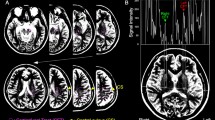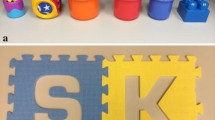Abstract
The lateralization index (LI) as determined from functional transcranial Doppler sonography (fTCD) can be used to determine the hemispheric organization of neural activation during a behavioral task. Previous studies have proposed different methods to determine this index, but to our knowledge no studies have compared the performance of these methods. In this study, we compare two established methods with a simpler method proposed here. The aim was to see whether similar results could be achieved with a simpler method and to give an indication of the analysis steps required to determine the LI. A simple unimanual motor task was performed while fTCD was acquired, and the LI determined by each of these methods was compared. In addition, LI determined by each method was related to behavioural output in the form of degree of handedness. The results suggest that although the methods differed in complexity, they yielded similar results when determining the lateralization of motor functions, and its correlation with behavior. Further investigation is needed to expand the conclusions of this preliminary study, however the new method proposed in the paper has great potential as it is much simpler than the more established methods yet yields similar results.





Similar content being viewed by others
References
Işik, H., and Arslan, S., An artificial neural network classification approach for use the ultrasound in physiotherapy. J Med Syst 35:1333–1341, 2011.
Demirhan, A., Kaymaz, M., Ahıska, R., and Güler, İ., A survey on application of quantitative methods on analysis of brain parameters changing with temperature. J Med Syst 34:1059–1071, 2010.
Hardalaç, F., Comparison of MLP neural network and neuro-fuzzy system in transcranial doppler signals recorded from the cerebral vessels. J Med Syst 32:137–145, 2008.
Lohmann, H., Ringelstein, E. B., and Knecht, S., Functional transcranial doppler sonography. Front Neurol Neurosci 21:251–260, 2006.
Aaslid, R., Markwalder, T. M., and Nornes, H., Noninvasive transcranial doppler ultrasound recording of flow velocity in basal cerebral arteries. J Neurosurg 57:769–774, 1982.
Serhatlioglu, S., Hardalaç, F., and Güler, İ., Classification of transcranial doppler signals using artificial neural network. J Med Syst 27:205–214, 2003.
Schmidt, P., Krings, T., Willmes, K., Roessier, F., Reul, J., and Thron, A., Determination of cognitive hemispheric lateralization by “functional” transcranial doppler cross-validated by functional MRI. Stroke 30:939–945, 1999.
Deppe, M., Ringelstein, E. B., and Knecht, S., The investigation of functional brain lateralization by transcranial doppler sonography. Neuroimage 21:1124–1146, 2004.
Knecht, S., Deppe, M., Ebner, A., Henningsen, T., and Huber, H., Noninvasive determination of language lateralization by functional transcranial doppler sonography: A comparison with the Wada test. Stroke 29:82–86, 1998.
Lohmann, H., Dräger, B., Ehrenberg, S. M., Deppe, M., and Knecht, S., Language lateralization in young children assessed by functional transcranial doppler sonography. Neuroimage 24:780–790, 2005.
Bishop, D. V. M., Badcock, N. A., and Holt, G., Assessment of cerebral lateralization in children using functional transcranial doppler ultrasound (fTCD). J Vis Exp, 2010. doi:10.3791/2161.
Duschek, S., and Schandry, R., Deficient adjustment of cerebral blood flow to cognitive activity due to chronically low blood pressure. Biol Psychol 72:311–317, 2006.
Rosch, R. E., Bishop, D. V. M., and Badcock, N. A., Lateralised visual attention is unrelated to language lateralization, and not influenced by task difficulty – a functional transcranial Doppler study. Neuropsychologia 50:810–815, 2012.
Dorst, J., Haag, A., Knake, S., Oertel, W. H., Hamer, H. M., and Rosenow, F., Functional transcranial doppler sonography and spatial orientation paradigm identify the non-dominant hemisphere. Brain Cogn 68:53–58, 2008.
Knake, S., Haag, A., Pilgramm, G., Reis, J., Klein, K. M., Hoeffken, H., Bartenstein, P., Oertel, W. H., Hamer, H. M., and Rosenow, F., Ictal functional TCD for the lateralization of the seizure onset zone – a report of two cases. Epilepsy Res 62:89–93, 2004.
Knake, S., Haag, A., Pilgramm, G., Dittmer, C., Reis, J., Abmann, H., Oertel, W. H., Rosenow, F., and Hamer, HM Language dominance in mesial temporal lobe epilepsy: A functional transcranial doppler sonography study of brain plasticity. Epilepsy Behav 9:345–348, 2006.
Silvestrini, M., Cupini, L. M., Placidi, F., Diomedi, M., and Bernardi, G., Bilateral hemispheric activation in the early recovery of motor function after stroke. Stroke 29:1305–1310, 1998.
Feldmann, E., Wilterdink, J. L., Kosinski, A., Lynn, M., Chimowitz, M. I., Sarafin, J., et al., The stroke outcomes and neuroimaging of intracranial atherosclerosis (SONIA) trial. Neurology 68:2099–2106, 2007.
Wolff, T., Guirguis-Blake, J., Miller, T., Gillespie, M., and Harris, R., Screening for carotid artery stenosis: An update of the evidence for the US preventive services task force. Ann Intern Med 147:860–870, 2007.
Oldfield, R. C., The assessment and analysis of handedness: The Edinburgh inventory. Neuropschologia 9:97–113, 1971.
Ransil, B., and Schachter, S., Test-retest reliability of the Edinburgh handedness inventory and global handedness preference measurements, and their correlation. Percept Mot Skills 79:1355–1372, 1994.
Williams, S., Handedness inventories: Edinburgh versus Annett. Neuropsychology 5:43, 1991.
Verdino, M., and Dingman, S., Two measures of laterality in handedness: the Edinburgh handedness inventory and the Purdue Pegboard test of manual dexterity. Percept Mot Skills 86:476–478, 1998.
McFarland, K., and Anderson, J., Factor stability of the Edinburgh handedness inventory as a function of test‐retest performance, age and sex. Brit J Psychol 71:135–142, 1980.
Fazio, R., Coenen, C., and Denney, R., The original instructions for the Edinburgh handedness inventory are misunderstood by a majority of participants. Laterality: Asymmetries of Body. Brain and Cogn 9:1–8, 2011.
Volkmann, J., Schnitzler, A., Witte, O. W., and Freund, H., Handedness and asymmetry of hand representation in human motor cortex. J Neurophysiol 79:2149–2154, 1998.
Furie, K. L., Kasner, S. E., Adams, R. J., Albers, G. W., Bush, R. L., Fagan, S. C., Halperin, J. L., Johnston, S. C., Katzan, I., Kernan, W. N., Mitchell, P. H., Ovbiagele, B., Palesch, Y. Y., Sacco, R. L., Schwamm, L. H., Wassertheil-Smoller, S., Turan, T. N., and Wentworth, D., Guidelines for prevention of stroke in patients with ischemic stroke or transient ischemic attack a statement for healthcare professionals from the American heart association/American stroke association council on Stroke: Co-Sponsored by the council on cardiovascular radiology and intervention: the American academy of neurology affirms the value of this guideline. Circulation 113:409–449, 2010.
Roger, V. L., Go, A. S., Lloyd-Jones, D. M., Adams, R. J., Berry, J. D., Brown, T. M., Carnethon, M. R., Dai, S., de Simone, G., Ford, E. S., Fox, C. S., Fullerton, H. J., Gillespie, C., Greenlund, K. J., Hailpern, S. M., Heit, J. A., Ho, P. M., Howard, V. J., Kissela, B. M., Kittner, S. J., Lackland, D. T., Lichtman, J. H., Lisabeth, L. D., Makuc, D. M., Marcus, G. M., Marelli, A., Matchar, D. B., McDermott, M. M., Meigs, J. B., Moy, C. S., Mozaffarian, D., Mussolino, M. E., Nichol, G., Paynter, N. P., Rosamond, W. D., Sorlie, P. D., Stafford, R. S., Turan, T. N., Turner, M. B., Wong, N. D., Wylie-Rosett, J., and Subcommittee AHASCaSS, Heart disease and stroke statistics--2011 update: a report from the American Heart Association. Circulation 123:18–209, 2011.
Pelletier, I., Sauerwein, H. C., Lepore, F., Saint-Amour, D., and Lassonde, M., Non-invasive alternatives to the Wada test in the presurgical evaluation of language and memory functions in epilepsy patients. Epileptic Disorders 9:111, 2007.
Hattemer, K., Plate, A., Heverhagen, J. T., Haag, A., Keil, B., Klein, K. M., Hermsen, A., Oertel, W. H., Hamer, H. M., Rosenow, F., and Knake, S., Determination of hemispheric dominance with mental rotation using functional transcranial doppler sonography and fMRI. J Neuroimaging 21:16–23, 2009.
Bishop, D. V. M., Watt, H., and Papadatou-Pastou, M., An efficient and reliable method for measuring cerebral lateralization during speech with functional transcranial doppler ultrasound. Neuropsychologia 47:587–590, 2009.
Matteis, M., Bivona, U., Catani, S., Pasqualetti, P., Formisano, R., Vernieri, F., Troisi, E., Caltagirone, C., and Silvestrini, M., Functional transcranial doppler assessment of cerebral blood flow velocities changes during attention tasks. Eur J Neurol 16:81–87, 2009.
Haag, A., Moeller, N., Knake, S., Hermsen, A., Oertel, W. H., Rosenow, F., and Hamer, H. M., Language lateralization in children using functional transcranial doppler sonography. Dev Med Child Neurol 52:331–336, 2010.
Dassonville, P., Zhu, X., Urgurbil, K., Kim, S., and Ashe, J., Functional activation in motor cortex reflects the direction and the degree of handedness. Proc Natl Acad Sci U S A 94:14015–14018, 1997.
Faress, A., and Chau, T., Towards a multimodal brain–computer interface: combining fNIRS and fTCD measurements to enable higher classification accuracy. Neuroimage 77:186–194, 2013.
Min, B., Marzelli, M., and Yoo, S., Neuroimaging-based approaches in the brain–computer interface. Trends Biotechnol 28:552–560, 2010.
Myrden, A., Kushki, A., Sejdić, E., Guerguerian, A., and Chau, T., A brain-computer interface based on bilateral transcranial doppler ultrasound. PloS One 6:e24170, 2011.
Acknowledgments
This study was carried out with funding support from support CAPES (Coordination for the Improvement of Higher Education Personnel, Brazil) and FAPESP – Brazil.
Author information
Authors and Affiliations
Corresponding author
Additional information
This article is part of the Topical Collection on Patient Facing Systems
Rights and permissions
About this article
Cite this article
Pinaya, W.H.L., Fraga, F.J., Haratz, S.S. et al. Comparing Methods for Determining Motor-Hand Lateralization Based on fTCD Signals. J Med Syst 39, 4 (2015). https://doi.org/10.1007/s10916-014-0185-z
Received:
Accepted:
Published:
DOI: https://doi.org/10.1007/s10916-014-0185-z




